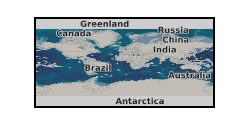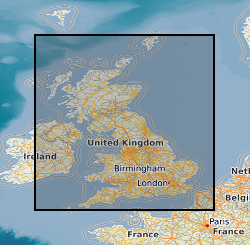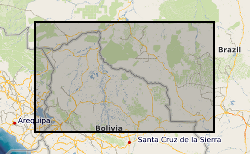Mineral exploration
Type of resources
Topics
Keywords
Contact for the resource
Provided by
Years
Formats
Representation types
Update frequencies
Scale
-

The raster provide the output of a machine-learning random forest algorithm modelling the occurrence of ferromanganese (Fe-Mn) crust deposits in the world ocean. This raster constitutes a data-driven approach for mineral prospectivity mapping of Fe-Mn crusts that should be used in conjunction with other expert-driven prospectivity analysis to guide the assessment of Fe-Mn crust coverage in the world ocean and potential mineral exploration. The raster contains values between 0.07 and 0.92. Any values outside of that range (e.g., 0) are outside of the model prediction and should not be displayed. To reproduce data as displayed in the forthcoming associated publication, it is recommended to apply a 'Percent Clip' stretched 'Viridis' colour scheme.
-

The database contains an index to over 600 ground geophysical surveys carried out in the UK for a variety of projects. A large number of these surveys were done for the DTI Mineral Reconnaissance Programme in the 1970s and 80s; many others were done at the request of BGS field mapping groups. Information held describes the survey objective, location of measurements, geophysical methods and equipment used, reports and publications, storage locations of data and results (for analogue and digital data), dates and personnel.
-

Between 1976 and 1982, the Overseas Directorate of the British Geological Survey, United Kingdom and the Geological Survey of Bolivia, Santa Cruz, carried out a major reconnaissance geological mapping, geochemical sampling and mineral exploration programme of that part of the Precambrian Brazilian Shield lying within eastern Bolivia. Previous geological work had been undertaken in the area, but this was the first time that a systematic and fully integrated survey had been attempted. The Project area is approximately 220,000 square kilometres and regional geochemical samples were collected from 8185 sites producing an overall sampling density of 1 sample per 27 square kilometres. Because of logistic problems it was impossible to sample certain inaccessible areas so the actual sampling density was 1 sample per 16 square kilometres for the 130,000 square kilometres effectively sampled. The geochemical samples were analysed in the Project laboratories in Santa Cruz and in the GEOBOL geochemical laboratories in La Paz. Uranium analyses were carried out by a commercial laboratory in the UK. The results of the Project are incorporated in 21 comprehensive reports in both English and Spanish. Twelve describe the geology, geochemistry and mineral potential of the individual 1:250,000 map areas and the remainder are devoted to the geology and mineral potential of areas of special geological or economic interest. The stream sediments were determined for: Ag, Co, Cu, Fe, Mn, Ni, Pb, Zn, As, U, B, Ba, Be, Cr, La, Li, Mo, Nb, Sn, Sr, Y, and Zr. These results are presented in an atlas as 22 single element 1:1 million scale, classed proportional symbol, point source data maps in which the symbols are overprinted on a simplified geological base map in order to facilitate rapid data interpretation. A 1:4 million scale moving average map based on a 4 x 4 km cell size and a 10 km search radius, printed alongside the symbol map, identifies the major regional variations. Raw data is available from the Geological Survey of Bolivia, Santa Cruz along with copies of the reports.
 NERC Data Catalogue Service
NERC Data Catalogue Service